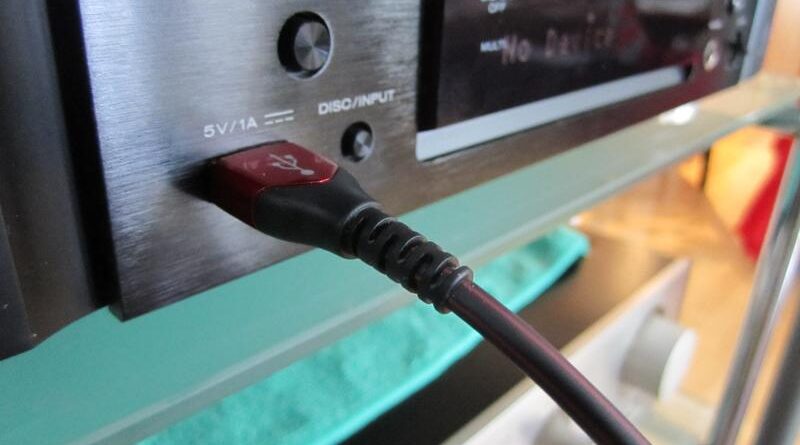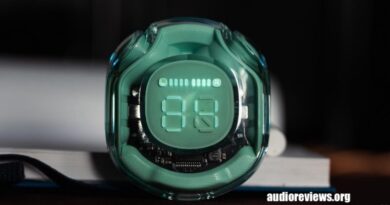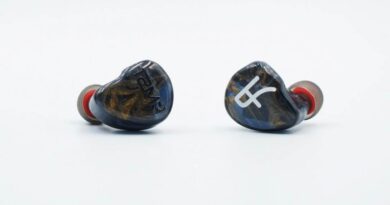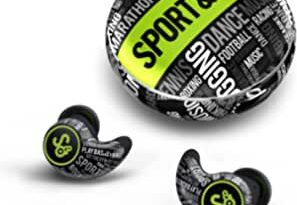How An AudioQuest USB Cable Saved My Life
Since all digital cables are sonically identical (aren’t they?), AudioQuest products protect our health whereas cheapos may lead to premature death. Here‘s why we cannot afford the latter…
In this Article
Introduction
It is well known that all digital cables sound the same as they only transport zeros and ones. You don’t believe me? You do?
Fact is, there is no difference in incoming vs. received data between expensive and budget cables, bits are bits, and the result is “bit perfect” in every case. So, no sonic difference, right?
Stop, we have to examine what’s in a bit: jitter, timing, and noise. Jitter and timing can be measured (and corrected for by re-clocking), which leaves us with noise. It is a bit of an unlucky choice of words, I’d call it impurities superimposed on the digital signal which may (or not) degenerate the sound.
A metallic digital cable is principally a conductor that also transports pre-existing noise (it cannot distinguish between the good and bad things in the data stream) but it is also an “antenna” for near-ambient RFI/EMI, and it generates its own stray/spare magnetic and electrical fields (when carrying a constant current).
So what can go wrong during digital data transfer? When signal voltage is transported, the host and the cable may pick up stray signals in addition to the intended one…just like dirt being added to the bathwater. In addition, host, cable, and client can be on different “electrical” ground levels. Third, interferences during transport may generate time delays.
Timing errors need filtering by decrappifiers such as the ifi Nano iUSB 3.0 and re-clocking, typically not done in the phone host but in the DAC client at the other end of the digital cable. EMI can be minimized or avoided by the use of high-quality, well-shielded electronic components in the phone – and by a good digital cable.
In a well-designed cable, data line and power lines are separated and well shielded from each other (and from outside electromagnetic interference from, let’s say, power supplies), and it is twisted to minimize the contact areas between the two. Material also plays a role for data integrity: for example, in networks, fibre optic cables are not susceptible to EMI, copper is. EMI is important not only for the design of cables, but also for the electronics and the circuit board.
In summary, noise contamination happens in the source and/or during transport through the digital cable. The old rule “garbage in, garbage out” is also valid for digital data. If the data stream leaving the phone is compromised, the cable cannot fix it. All it can do is not let it further deteriorate. It cannot reclock or filter, and therefore not correct for the phone’s EMI/RFI and/or jitter.
Therefore, if the source emits a noisy signal, even the best cable makes no difference, but a bad cable further deteriorates the signal. If the host signal is clean, cables may make a difference. A dedicated music player may generate a cleaner data stream than a computer or a phone.
Where I got my information from? I had simply followed the advice of the audioquestsciencereview.com blog. It is the one where the Emir of SINDBAD measures cables and DACs etc.
He always comes to the same conclusions: all cables (digital and analog), DACs, and amps sound the same, as long as they measure the same. And his followers agree.

The pragmatic budget audiophile therefore buys a cheap DAC and gets their cables from the dollar store, saves a lot of money…and laughs at these rich old bearded men who hang out at audio shows. You know, those graveyard blondes who can’t let go of Dire Straits, Pink Floyd, and Toto.
And that’s where my problem started: the dollar store. Spending so little on quality cables left me plenty of funds for junk food: cookies, chips, chocolate, pop, etc.
Unfortunately, my increasing knowledge of budget audiophilia was positively correlated with my blood-sugar levels, which resulted in insulin resistance. I also got fatter. Yep, I was moving steadily towards type 2 diabetes.
| What’s an Emir? Emir, sometimes transliterated amir, amier, or ameer, is a word of Arabic origin that can refer to a male monarch, aristocrat, holder of high-ranking military or political office, or other person possessing actual or ceremonial authority. Wikipedia |
While my physical shape kept pace with that of the aging members of Dire Straits, Pink Floyd, and Toto, my doctor gave me the choice between Ozempic injections [what’s Ozempic?] and AudioQuest cables as a last resort. I chose the latter – and lost 14 kg in a few months.
My blood values are now normal and I can wear pants again that had been catching dust in the basement for years. No more danger of type 2 diabetes. No more risk of heart attacks and stroke.
How I did that? I purchased an AudioQuest USB-A to Lightning cable, model “Cinnamon”. Not that cinnamon would be rich in antioxidants, antibacterial properties, or reduce the effects of bad cholesterol (all of which is true)…no, it was simply pricey for a dollar-store customer like me.
AudioQuest, in contrast to audioquestsciencereview.com, promotes the idea that not all (digital and analog) cables sound identical. The company offers a wide variety of product covering the whole market spectrum.
Does the AudioQuest Cinnamon Lightning to USB-A cable make a Difference?
I purchased the 0.75 m AudioQuest Cinnamon USB-A to Lightning cable for personal use (and not for review purposes) from the company and thank them for their discount. You find it in the spice aisle of your local supermarket and on the AudioQuest website.
My first test related to clean power. After charging my iPhone through the AudioQuest Cinnamon cable, Apple’s music player sounded better. Brass instruments and violins emitted rounder notes…and there was lot more transparency.
This was not measurable, but had to do with the cable’s insulation, which absorbed energy. This absorption re-aligned the dilithium crystals in uniform order.
As a side effect, the display of the battery charger appeared brighter and sharper.
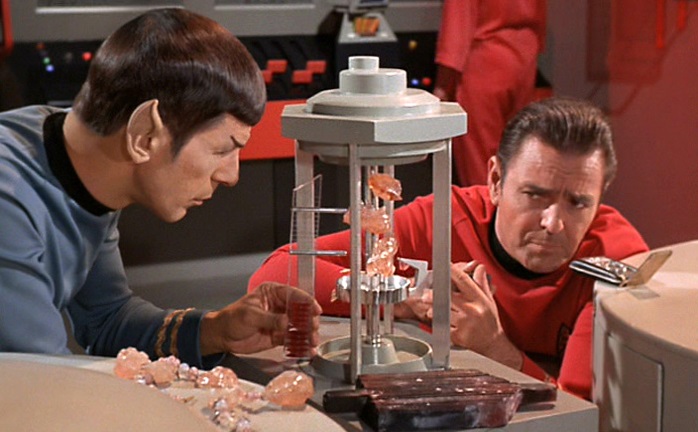
Non-Health Aspects: Sound
You may have noticed that the writeup so far has been an April Fools’ Day joke. Getting serious, I plugged my iPhone with the AudioQuest Cinnamon Lightning cable in the Marantz SA8005 SACD player (see title photo) that was connected to a Luxman L-410 amp (via AudioQuest Sydney RCA interconnects) and Heybrook HB1 speakers.
In comparison to my Amazon Basics Lightning cable, the Cinnamon contributes a tad more richness, warmth, and more rounded notes. The question is whether one cares.
Subjectivity vs. Subjectivity
The difference between these digital cables will have different impact on different people with different attitudes. The measurement-guided enthusiast will not bother, the tight-fisted aficionado will not care either, but the more fine spirited soul (with deeper pockets) will.
To me, such nuances add up and will make a substantial cumulative difference over time. I treasure the fact that the sound will be improved with this cable every time I listen to the music.
An example of cumulative benefits: I like the AudioQuest DragonFly Red and Cobalt dongle DACs – and have used them for a couple of years now. I hear a huge difference between the two, the Cobalt is just richer and rounder playing whereas the punchier Red has some shrillness in the upper mids (which can be tamed to some extent with the JitterBug). Therefore, the Cobalt gets way more eartime than the Red.
Measurement-guided analysts Archimago and a friend could not hear a difference between these two dongle DACS that justified their $100 price difference. Sound-guided analyst Steve Guttenberg begged to differ.
In the end all of us are right: each person decides what is good for themselves because it is their ears – and their wallets.
A problem arises when one group mobs those who disagree, backed by “objectivity” claims of measurements. This is invalid as any measurement setup is subjective and no correlation between quantitative measurements (“observation”) and qualitative sound (“interpretation”) has been established. The self-proclaimed objectivity is in reality just “internal consistency”, which is of limited usefulness.

In order to get around this logical fallacy, one has to subscribe to a belief system. Herd mentality is added to boost each other’s confidence resulting in a carnival of bullying know-it-alls.
It is actually grotesque that anybody refuses to use their ears for evaluating sound.
| “Not everything that matters can be measured, and not everything that can be measured matters.” Sometimes attributed to Albert Einstein, but in fact originating with sociologist William Bruce Cameron, it addresses the notion that anything that cannot be readily quantified is valueless. |
But the world is not black and white. On the other hand, cable companies such as Kimber and AudioQuest also come up with unsubstantiated correlations between physics and sound….the physics may be correct but may not influence the sound at all. Paradoxically, their cables may sound as good as claimed, but for the wrong reasons.
This fallacy is principally not any different from the previously mentioned one and I wonder whether these claims are just defence mechanisms against the “measurement crowd”.
At least, the “quality crowd” keeps to themselves and does not feel the need to impose themselves on others…except perhaps bore us with endless discussions of cable break-ins and the “critical period between hours 150 and 200 on the way to the recommended 500 hours” (yes, I read that).
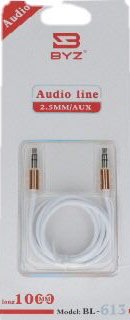
From my own experience: I once helped tune the KBEAR Diamond earphone. After we got the frequency response (used as a guiding tool to record differences) to our liking, I received the final pre-production prototype. And it sounded offensively bad to my ears. But all the company had done was exchange the cable.
Luckily, the original cable was also in the package – which fixed the sound for my ears. The difference between the two cables? The offensive one had an OCC wire, the preferred one was made of oxygen-free copper.
Both were $15 cables, therefore cost was not an issue. The Diamond yielded the same frequency response graph with either cable.
In summary, the sound of music cannot be characterized by (quantitative) measurements of sine waves. That’s apples and oranges. On top of that, quantity and quality are not correlated in a linear manner. We have to use our ears…and it may take trial and error…which can be pricey.
Concluding Remarks
We at www.audioreviews.org are all keen on trying things out. We principally don’t believe any claims before we have tested and verified them, which includes the use of our ears without prejudice. Our blog offers many examples of dismissing unjustified hype generated by companies and influencers.
We also consult measurements but refrain from overinterpreting them. We use every available line of evidence to arrive at a coherent, meaningful interpretation. And we are open to learning.
We are also aware that quality audio is not black and white, and that there is snake oil out there…but our approach minimizes our risk falling for that. In the end, the controversy does not matter as the quantity crowd stays away from the (pricier) quality, and the quality crowd frowns upon dollar-store Hifi. They simply don’t mix – and only one of them barks up the tree of the other, sadly.
I personally enjoy the Cinnamon and my weight loss (the 14 kg and the pre-diabetes are real). And I can use this cable with generations of iPhones over years to come [unless Apple changes over to USB-C], which makes it a worthwhile acquisition in the long run.
Now let’s get some chips from the dollar store to celebrate the day. Potato chips that is, not DAC chips.
Please check your blood pressure regularly!
Until next time…keep on listening!




